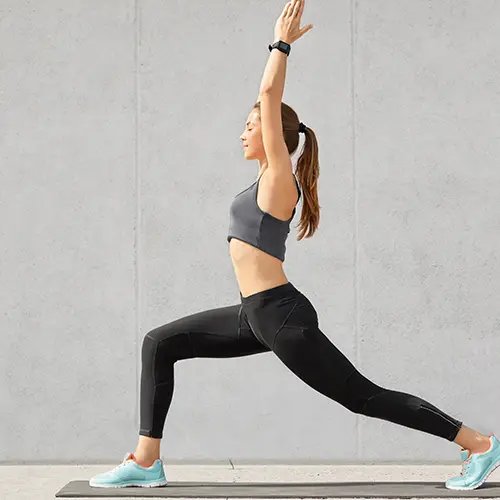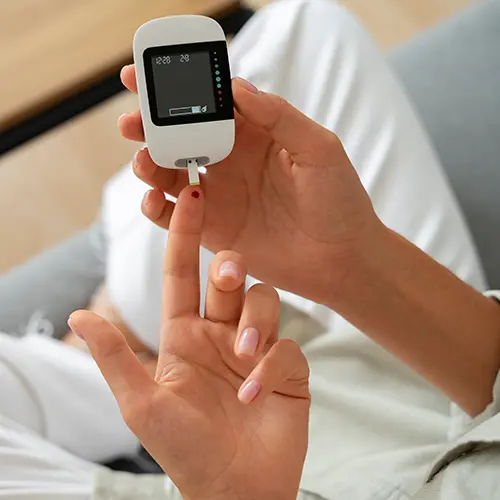Table of Contents
Anxiety disorders are among the most common mental health challenges faced worldwide, affecting individuals across various ages and backgrounds. The journey to recovery from such disorders is unique for each person and often involves a combination of therapeutic approaches, lifestyle changes, and sometimes medication.
Key to this process is understanding that anxiety is not just a fleeting state of nervousness but a complex condition that may require sustained effort and support to manage effectively.
Recovery often involves learning coping strategies to deal with anxiety triggers, improving self-awareness, and building resilience. It's crucial to recognize the importance of seeking professional help and the value of a supportive network.
Embracing this road to recovery can significantly improve quality of life and overall well-being.
What are anxiety disorders?
Anxiety disorders are a group of mental health conditions characterized by excessive and persistent worry, fear, or nervousness that are disproportionate to the actual danger or threat in a person's environment. These disorders can significantly interfere with daily activities and a person's ability to function effectively. Common types of anxiety disorders include:
- Generalized Anxiety Disorder (GAD): This involves chronic, excessive worry about everyday issues and events, often with no apparent reason for concern.
- Panic Disorder: Characterized by recurrent, unexpected panic attacks—sudden periods of intense fear or discomfort that peak within minutes. Symptoms can include heart palpitations, sweating, trembling, shortness of breath, and feelings of impending doom.
- Social Anxiety Disorder (Social Phobia): Involves intense fear and avoidance of social situations due to feelings of embarrassment, self-consciousness, and concern about being judged or viewed negatively by others.
- Specific Phobias: These are intense fears of particular objects or situations (like heights, flying, or spiders) that go beyond normal boundaries and cause people to avoid ordinary situations.
- Obsessive-Compulsive Disorder (OCD) is characterized by unwanted, persistent thoughts (obsessions) and repetitive behaviors (compulsions) that the person feels driven to perform.
- Post-Traumatic Stress Disorder (PTSD): Can develop after exposure to a terrifying event or ordeal in which severe physical harm occurred or was threatened.
Anxiety disorders often co-occur with other mental or physical illnesses, which can make their diagnosis and treatment more challenging. Effective treatments generally include psychotherapy, medication, or a combination of both and vary depending on the type of anxiety disorder and individual preferences.
How common are anxiety disorders?
Anxiety disorders are among the most common mental health conditions globally. They affect a significant portion of the population across various ages, cultures, and socio-economic backgrounds. The prevalence can vary based on the type of anxiety disorder and the population being studied. Key points regarding their commonality include:
- Global Prevalence: Studies have consistently shown that anxiety disorders are widespread, with some estimating that they affect about 1 in 5 people at some point in their lives.
- Variation by Type: Certain types of anxiety disorders, such as specific phobias and social anxiety disorders, are more common than others, like panic disorder or agoraphobia.
- Differences by Age and Gender: Anxiety disorders often begin in childhood or adolescence and can persist into adulthood. They are more commonly diagnosed in women than in men.
- Impact of Life Events and Stressors: The prevalence of anxiety disorders can increase in response to life stressors, traumatic events, and environmental factors.
- Comorbidity with Other Conditions: Anxiety disorders often co-occur with other mental health conditions like depression, which can complicate diagnosis and treatment.
It's important to note that the reported prevalence may be influenced by underreporting or misdiagnosis, as some people with anxiety disorders may not seek treatment or may be incorrectly diagnosed with other conditions. Additionally, cultural factors and varying healthcare systems can impact the diagnosis rates in different regions. Despite these challenges, the data indicates that anxiety disorders are a significant and common public health issue.
Can anxiety disorders be cured?
The term "cure" may not fully apply to anxiety disorders in the way it does to some physical illnesses. However, anxiety disorders can be effectively managed and treated, allowing individuals to live whole and productive lives. The goal of treatment is often to reduce symptoms to a manageable level rather than to eliminate them. Here are some critical points about managing anxiety disorders:
- Variability in Response to Treatment: People respond differently to treatment. Some may experience a significant reduction in symptoms or even a period of remission, whereas others might continue to experience some level of anxiety.
- Therapy: Psychotherapy, particularly cognitive-behavioral therapy (CBT), has been proven effective in treating various types of anxiety disorders. Therapy can help individuals understand and change their thought patterns and behaviors that contribute to their anxiety.
- Medication: Medications, such as antidepressants and anti-anxiety drugs, can help manage symptoms. They are often more effective when combined with therapy.
- Lifestyle Changes and Coping Strategies: Healthy lifestyle habits, such as regular exercise, a balanced diet, adequate sleep, and stress management techniques, can significantly improve symptoms.
- Ongoing Management: For many, managing an anxiety disorder is a continuing process. It may include regular therapy, medication, self-help strategies, or a combination of these approaches.
- Early Intervention: Early diagnosis and intervention can improve the effectiveness of treatment and may prevent the disorder from becoming more severe.
Individuals with anxiety disorders need to work closely with their healthcare providers to find the treatment plan that works best for them. While a complete "cure" in the traditional sense might not be possible for everyone, with appropriate treatment, the majority of people with anxiety disorders can lead active, fulfilling lives.
How long does it take to recover from an anxiety disorder?
The duration of recovery from an anxiety disorder varies significantly from person to person, depending on several factors. There is no set timeline for recovery, as the individual's unique circumstances influence it, the type of anxiety disorder, its severity, the treatment approach, and the individual's response to treatment. Here are some key considerations:
- Type and Severity of the Disorder: Some anxiety disorders might be more deeply rooted or complex and may take longer to manage effectively. For instance, generalized anxiety disorder (GAD) or post-traumatic stress disorder (PTSD) might require a more extended treatment period than specific phobias.
- Treatment Approach: Combining therapies, such as cognitive-behavioral therapy (CBT), medication, lifestyle changes, and support systems, can impact recovery time. Some individuals may respond quickly to treatment, while others may need more extended periods to see significant improvements.
- Individual Differences: Personal factors, including genetic predispositions, life experiences, support systems, and overall health, play a crucial role in recovery duration. Additionally, an individual's commitment to and engagement with the treatment process can influence the outcome.
- Early Intervention: Generally, earlier diagnosis and treatment can lead to more effective management and shorter recovery times.
- Continuous Management: For many, managing an anxiety disorder is an ongoing process. Some people may experience periods of improvement followed by relapses, a normal part of the recovery journey.
- Lifestyle and Coping Strategies: Incorporation of healthy lifestyle choices and effective coping strategies can aid in quicker recovery and better management of symptoms.
It's important to remember that recovery from an anxiety disorder is not necessarily a linear process. There can be ups and downs, and patience and persistence are key. Ongoing communication with healthcare providers and adjustments to treatment plans as needed are essential parts of the journey toward managing anxiety effectively.
Are there any self-help strategies for managing anxiety disorders?
Yes, several self-help strategies can be effective in managing anxiety disorders. These strategies are often used with professional treatment, such as therapy and medication, but can also be helpful. Here are some standard self-help techniques:
- Mindfulness and Meditation: Practices like mindfulness meditation can help you stay grounded in the present moment, reducing worry about the future or rumination on the past. These techniques can also enhance overall mental well-being and stress resilience.
- Relaxation Techniques: Methods such as deep breathing exercises, progressive muscle relaxation, or guided imagery can help reduce physiological symptoms of anxiety, such as rapid heartbeat and muscle tension.
- Regular Exercise: Physical activity is a powerful stress reliever. It can improve mood, increase energy levels, and help manage symptoms of anxiety and depression.
- Healthy Eating Habits: A balanced diet can impact your mood and energy levels, thus indirectly affecting your anxiety levels. Avoiding excessive caffeine and sugar, which can exacerbate anxiety symptoms, is also beneficial.
- Adequate Sleep: Poor sleep can exacerbate anxiety, so it’s essential to establish a regular sleep routine and create a comfortable sleep environment.
- Journaling: Writing down your thoughts and feelings can help you understand and manage them more effectively. It can also be a way to track your progress and identify triggers.
- Limiting Alcohol and Avoiding Drugs: These substances can increase anxiety and make it more challenging to manage.
- Building a Support Network: Talking with friends and family or joining a support group can provide emotional support and decrease feelings of isolation.
- Time Management: Learning to manage your time effectively can reduce stress and help you feel more in control.
- Cognitive Techniques: Educating yourself about cognitive distortions and learning to challenge and change negative thought patterns can be very helpful.
- Breathing Exercises: Simple breathing techniques, like deep diaphragmatic breathing, can help calm the body's stress response.
- Setting Realistic Goals: Break tasks into smaller, manageable steps and set realistic expectations for yourself.
It's important to remember that while these strategies can be very effective, they are not a substitute for professional treatment in cases of severe anxiety. If you're struggling with anxiety, it's advisable to consult a healthcare provider for a comprehensive treatment plan tailored to your needs.




















